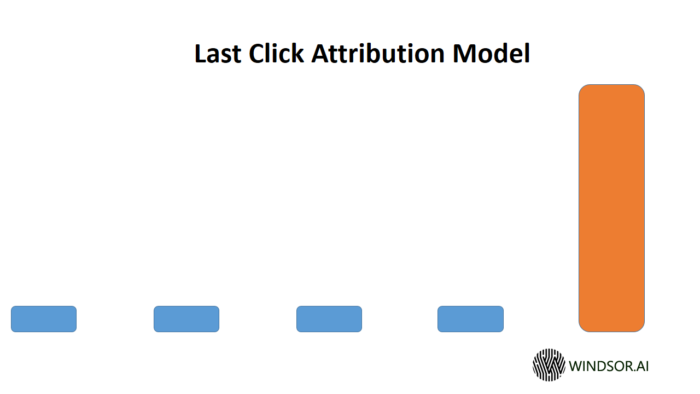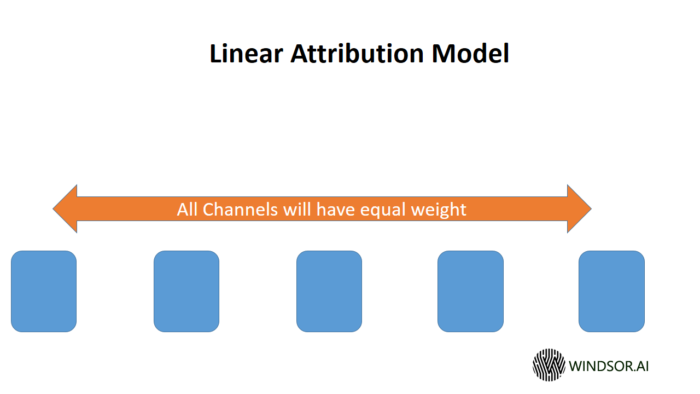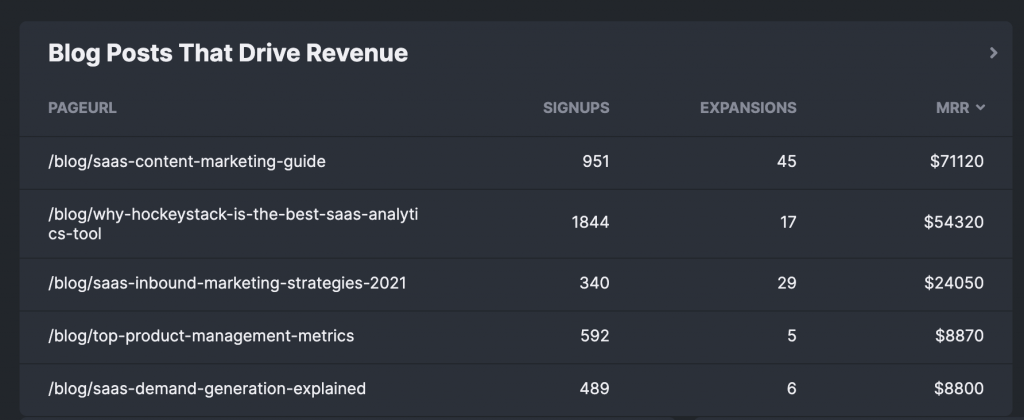How Do You Measure Marketing Attribution?
Every business owner wants that when a user comes across an advertisement of the business or content such as a blog or social media post, that user instantly turns into a potential customer or makes an instant sale. Unfortunately, the situation often does not work so ideally.
Often, a user needs to interact with that business several times through different channels to become a customer. So, which of these channels the user interacts with has made this user a potential customer? As an answer to this question, marketing attribution comes into play.
Marketing Attribution Models
You can predict how your customer gets to the final point in many different ways. Therefore, there are many various marketing attribution models available. Thanks to this article, you will be getting information about the most known and most widely used attribution models. If you want to learn more about attribution models, you can check here.
Last Interaction

The Last Interaction Model (also known as the Last-Touch or Last-Click Model) is, as the name suggests, a marketing interaction model that focuses on the user’s last interaction before becoming a potential customer.
For example, let’s say a user first encounters a social media post with your business. Later, this user comes across you on another social media platform and examines your website in the following hours. Finally, a blog reads your post and makes a purchase. The Last Interaction Model gives all the success of this purchase to the user’s most recently visited blog post.
In this model, you need to determine the last channel the user visited before taking action. Therefore, the Last Interaction Model is quite comfortable to follow and implement. Besides, nowadays, people can interact with you using different browsers or devices. That makes it very difficult to monitor the interaction process. In such cases, the Final Interaction Model makes the process much easier.
This model, on the other hand, ignores all penultimate touchpoints. Ignoring the previous process may not always work.
First Interaction

The First Interaction Model is quite similar to the Last Interaction Model in its focus on interactions. However, unlike the Last Interaction Model, the direction of the model is the platform with which the user first interacts.
Based on the example we gave in the Last Interaction Model, the First Interaction Model sees the social media post with which the user first interacted as the source of successful sales. The model does not care about the user’s behavior after that social media post.
The most significant advantage of this model, just like the Last Interaction Model, is that it can apply quickly and easily. If your users do not need to interact with many different channels to return to potential customers, this method may be convenient for you. On the other hand, the result can be misleading as this method does not consider the marketing wonders that follow the process.
Linear

Linear Model is one of the Multi-Channel Attribution Models. In the Linear Model, every platform the customer interacts with before reaching the desired result is equally important. The first, last, or occasional contents it interacts with have no advantage over the others.
Again, going from the first example, all four touchpoints where the user interacts with you are 25% important. If the user in the example decided to read one more blog before making a purchase, all these touchpoints would be 20% important.
The biggest plus of the Linear Model is that it gives an overall picture of how your marketing strategy is going. However, since it is a model that considers each of the methods you implement equally important, the Linear Model cannot show which marketing tactic is more effective than the other.
Position-Based Model

In the Position-Based Attribution Model, the platform with which the user first interacted before becoming a potential customer and the medium he interacted with last is based. So the first interaction is 40%, the last interaction is 40% important. All remaining interactions receive an equal share of the remaining 20% importance. This attribution model is also known as the U-shaped attribution model.
In the previous example of attribution models, the user interacted with two different social media posts, then your business website, and finally a blog post and made a purchase. When this move is made with the Position-Based Attribution Model, much of the success of the investment is attributed to the first social media post and blog post. The other social media post and website he visits also gets a small share of the success of the purchase.
The most important advantage of this model is that it does not ignore any interaction and gives you the chance to examine their journey from a wide window. On the other hand, the model may not pay enough attention to the customer’s exchanges between the first and last. This situation can cause you to miss some essential interactions. For example, in the example we discussed, the platform that leads the customer to the desired result may be the website he visits. Maybe he just looked at the blog post for ideas and didn’t care much. The Position-Based Model will lead you to the wrong result in such a case.
How To Choose An Attribution Model
Consider that there are so many different attribution models. That’s why many factors, such as your company’s status in marketing, how many different touchpoints you have in your funnel, and your company’s primary goals play a role in determining the appropriate attribution model for you. It would be best to remember that in some scenarios, a single model may not solve your entire job. You may need to work with more than one attribution model in such cases.
Different Scenarios, Different Models
For example, suppose you are a company that exists in many different channels. In that case, the First Interaction Model will be very effective in determining which channel your potential customers contact you most. In this way, you can identify the channel that attracts the most attention of users at first glance and focus on it.
If you are starting with a narrow channel and a short sales cycle, it may be helpful to see which track you persuade your potential customers through. In such cases, using the Last Interaction Model will be beneficial in terms of determining the moment when your customer decides to choose you.
If you want to regulate your spending on advertising channels, Linear Model is perfect for you. Thanks to this model, you can see which channels your target audience interacts with and how. That makes it easier to identify which channels are not bringing you any customers.
Marketing Attribution Dashboards
What Subject Should You Focus On Writing?

Blog posts are critical for your business to be recognized. However, some content generates more customers and, therefore, more revenue than others. By comparing the payments you get from your customers with the blogs they interact with, you can predict which type of content will be in your company’s best interest to produce more.
As seen in the example above, the content marketing guideline was the content that brought the most monthly recurring revenue. You can draw the following conclusions from here:
- Since the most consumed subject is content marketing, users working in content marketing in your business make more purchases than others.
- Those who work in or are interested in content marketing seek more information than those in other fields.
- Customers interested in content marketing are a more profitable customer group.
- SEO will be more beneficial for your business if you produce and share blogs about content marketing more than blogs about other topics.
Which Source Brings the Highest Revenue?

Just like what topics you write about, which platforms you use more effectively than others are also significant for the benefit of your business. It is of great importance for the future of your business to determine the platform that brings the most customers to your company and give more weight to this platform than others. If you do not analyze these platforms correctly or do not act according to these analyzes, you may cause much more significant damage to your business than you think.
For example, as seen in this dashboard, the two platforms that bring the most profitable customers are Google and Twitter. If the company spends most of its budget creating content for Facebook, for example, it can be a pretty stunning picture. As a result of this data, if they rearrange their budgets and allocate a more outstanding share to Google ads and Twitter content, they will have followed a much more profitable strategy without changing their marketing budget.
The Power of UTMs

UTM links are also a great way to set marketing strategies and monitor campaign traffic. You can measure the behavior of your target audience and users who are converted to potential customers through UTMs. At the same time, you can define where your customers come from and develop your marketing strategies in the direction that generates the most revenue.
As can be seen from the example dashboard, the most profit was obtained thanks to the CPC. A company faced with such a scenario, for example, should change this strategy if it gives more weight to emails than CPC. In this way, he can bring his profit to a more optimal level.
Conclusion
Marketing Attribution is a fundamental issue you need to pay attention to connect more potential customers to your business and increase your profits. Therefore, it will be pretty advantageous for you to determine the most appropriate association model for your company as soon as possible. Please note that each company’s method to be applied may differ according to their needs. Likewise, with the changes in the strategies, you have set for your company over time, an interaction model that used to be effective may have lost its effect. That’s why it’s essential to keep track of your marketing interaction up-to-date.
FAQ
Marketing Attribution allows you to identify and track interactions that lead users to lead. This way, you can manage your marketing spend more effectively. In other words, you can optimize your profit without spending any extra money.
In its simplest terms, Marketing Attribution platforms allow you to perform your marketing associations much faster and more clearly and to evaluate the association results from a much broader perspective. They make your job easier in terms of charting your marketing path.
Attribution reports reveal all the paths your user has followed in the process of becoming your potential customer. These reports allow you to quickly see how effective your marketing strategies are and what changes in your system will lead to a more optimal result in the light of the paths followed by your potential customers.



